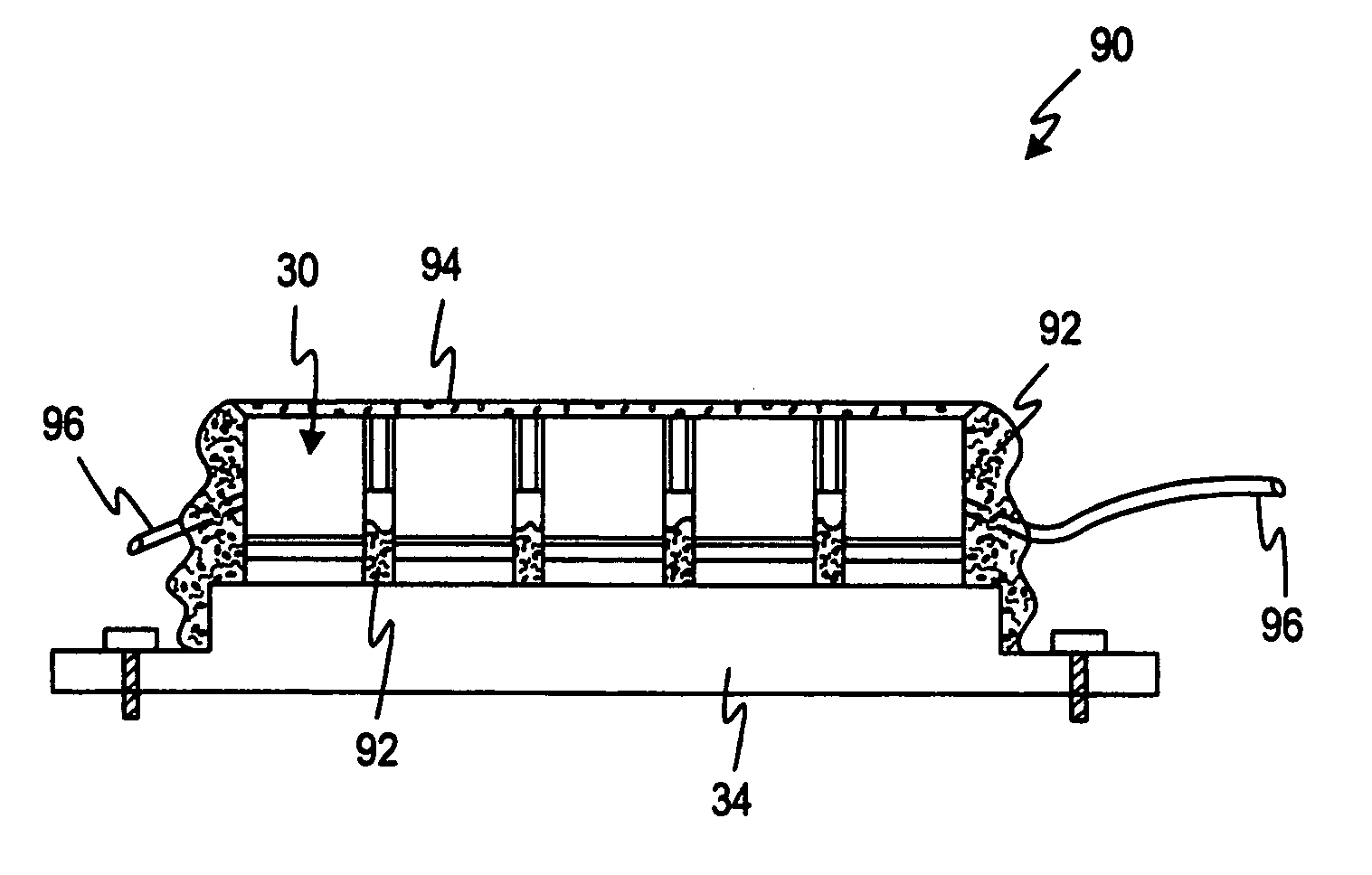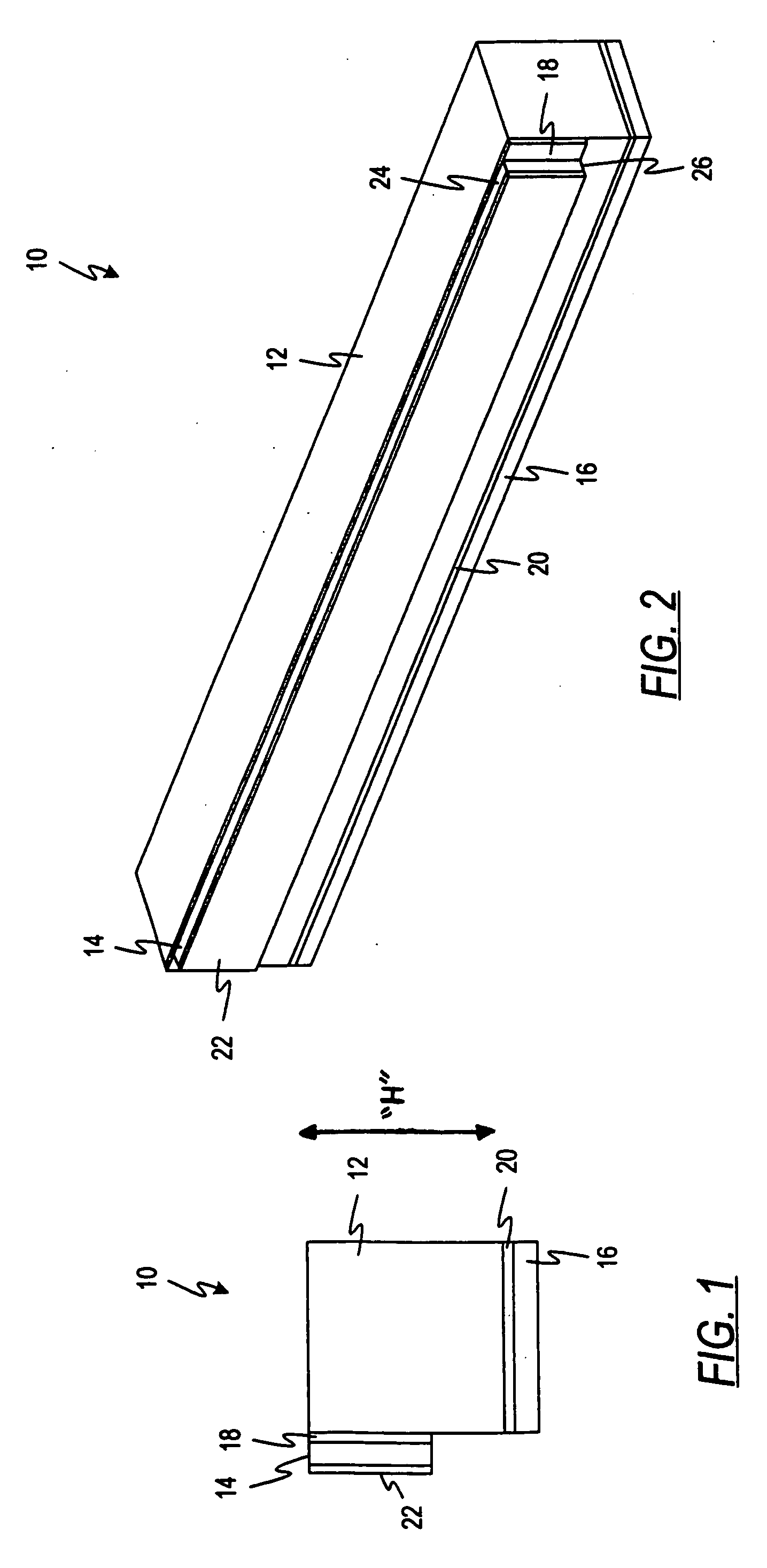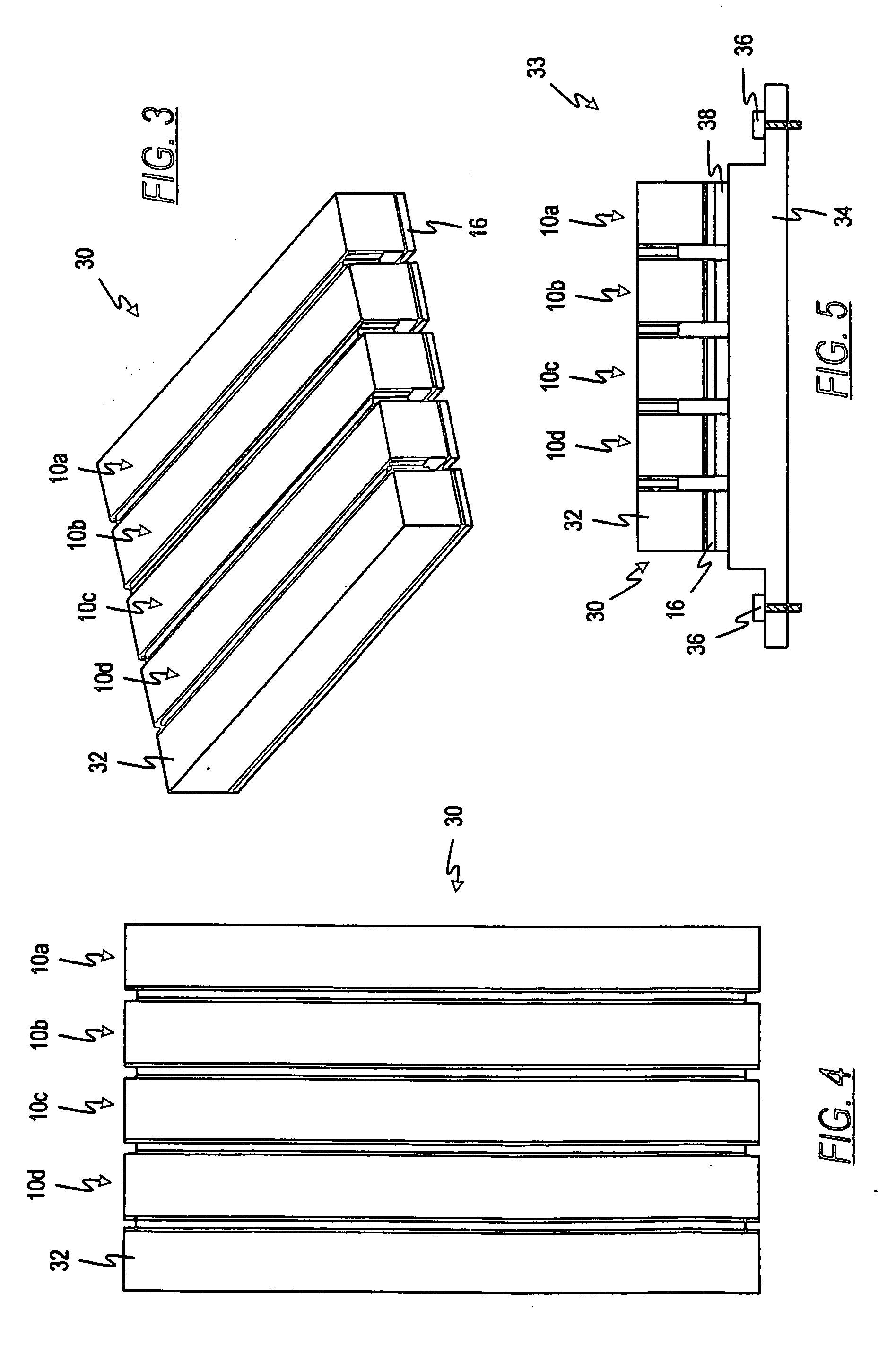Laser diode packaging
a technology of laser diodes and packaging, applied in the field of packaging, can solve the problems of reducing the utilization rate of laser diodes, reducing the efficiency of laser diodes, and increasing the difficulty of dissipation of heat, so as to achieve the effect of minimizing thermal resistance and small dimensions
- Summary
- Abstract
- Description
- Claims
- Application Information
AI Technical Summary
Benefits of technology
Problems solved by technology
Method used
Image
Examples
Embodiment Construction
[0033] Referring initially to FIGS. 1 and 2, a laser diode package 10 includes a heat sink 12, a laser diode bar 14, and a lower substrate 16. The laser diode bar 14 is attached to the heat sink 12 through a first solder layer 18. The substrate 16 is attached to the heat sink 12 through a second solder layer 20. The laser diode bar 14 may also include a bar solder layer 22 on its side which opposes the heat sink 12. The method by which such a bar solder layer 22 is applied is described in detail with respect to FIGS. 8-11.
[0034] The laser diode bar 14 has an emitting surface 24 at its upper end and a reflective surface 26 that opposes the emitting surface 24. The height of the laser diode bar 14 is defined as the distance between the emitting surface 24 and reflective surface 26. The junction of the laser diode 14, which is the region at which the photons are emitted from the laser diode bar 14, is typically closer to the heat sink 12. However, the junction of the laser diode bar 1...
PUM
 Login to View More
Login to View More Abstract
Description
Claims
Application Information
 Login to View More
Login to View More - R&D
- Intellectual Property
- Life Sciences
- Materials
- Tech Scout
- Unparalleled Data Quality
- Higher Quality Content
- 60% Fewer Hallucinations
Browse by: Latest US Patents, China's latest patents, Technical Efficacy Thesaurus, Application Domain, Technology Topic, Popular Technical Reports.
© 2025 PatSnap. All rights reserved.Legal|Privacy policy|Modern Slavery Act Transparency Statement|Sitemap|About US| Contact US: help@patsnap.com



